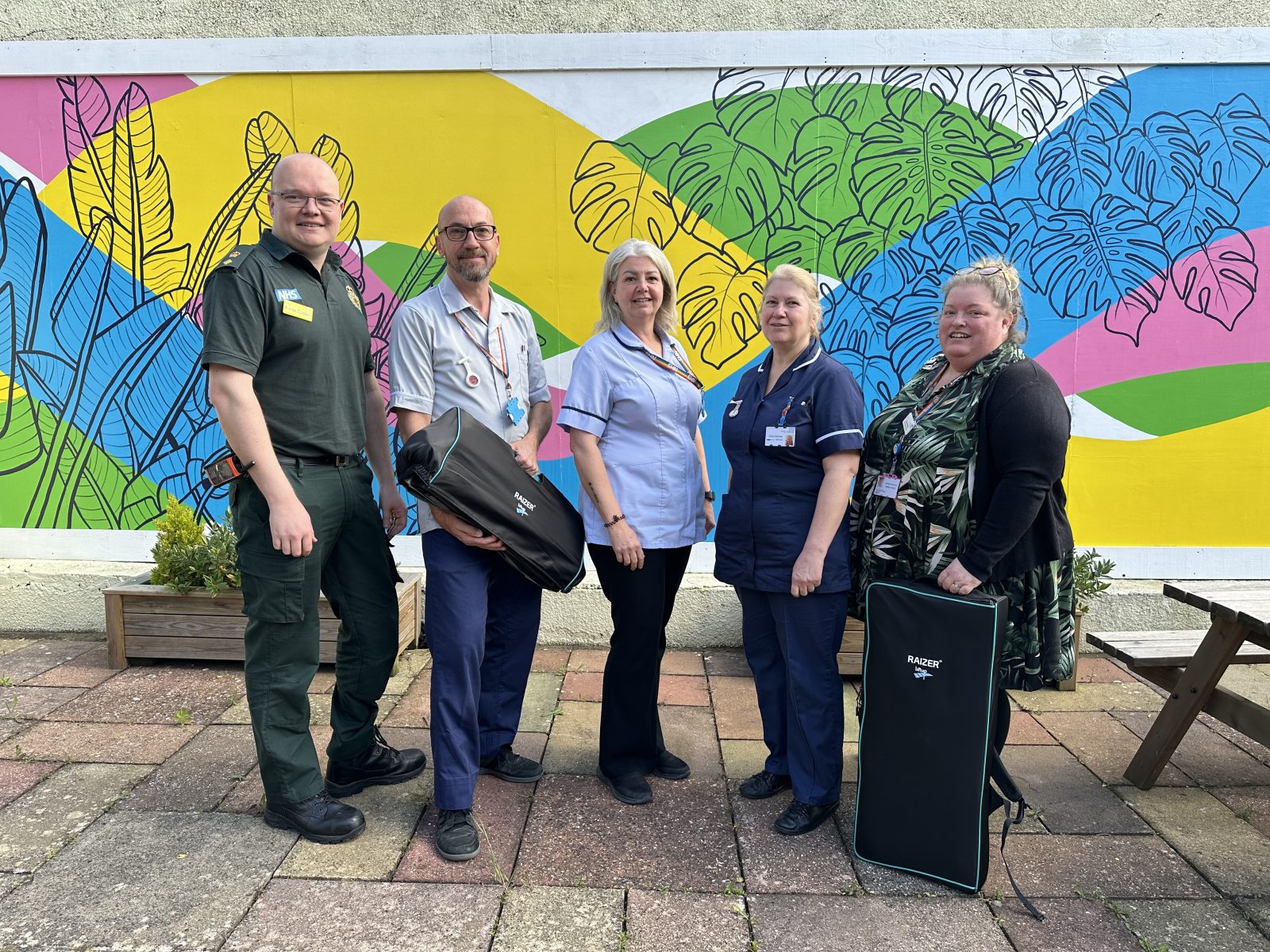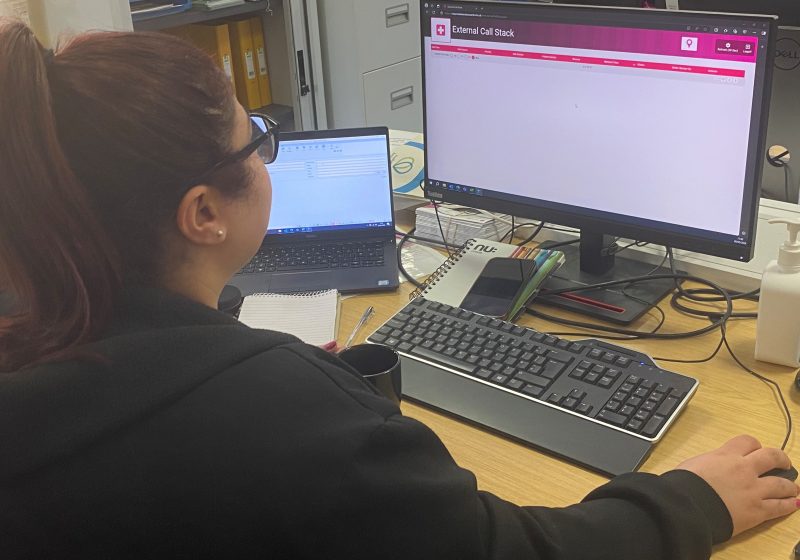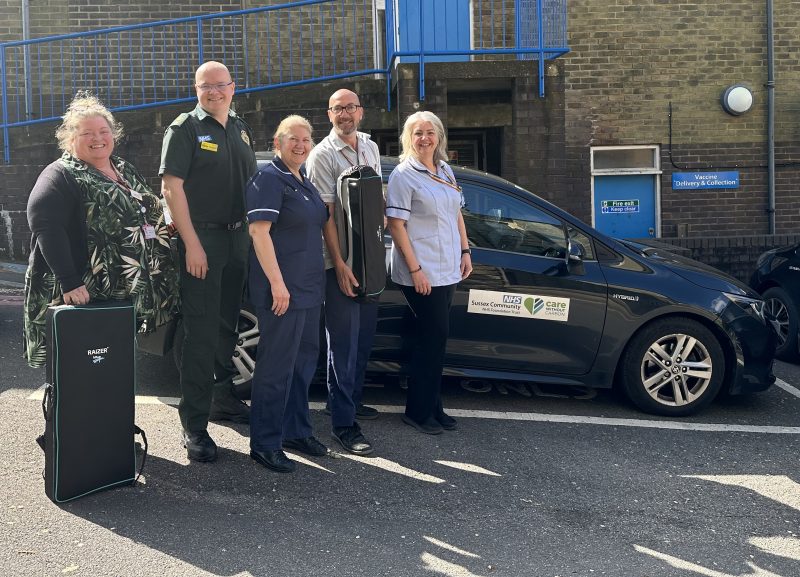
More patients across the region are receiving specialist care in their own homes instead of being admitted to hospital as the ambulance service continues to develop stronger links to multi-disciplinary Urgent Community Response (UCR) teams.
Over the past year, South East Coast Ambulance Service NHS Foundation Trust (SECAmb) has been working in a phased approach with teams across its region, which typically include nurses, paramedics, physiotherapists and occupational therapists, to develop working relationships and provide access to its systems to view lower category calls requiring a response.
 The approach has now seen the first teams go live with remote access to a secure portal linked to SECAmb’s Computer Aided Dispatch (CAD) system. Through the portal the teams can select appropriate lower category call patients which they are able to attend to provide care.
The approach has now seen the first teams go live with remote access to a secure portal linked to SECAmb’s Computer Aided Dispatch (CAD) system. Through the portal the teams can select appropriate lower category call patients which they are able to attend to provide care.
A key partner in the project, and the first to go live on the new portal was Sussex Community NHS Foundation Trust in March. It now has all seven of its UCR teams live across the county and has attended more than 220 patients via the portal with 72 per cent of patients being managed by the teams without further support from the ambulance service. It now operates 12 hours every day from 8am-8pm.
Further teams across the Trust’s Kent, Surrey and Sussex region are expected to move to the final phase over the coming weeks and months.
 UCR teams provide urgent care to people in their homes which helps to avoid hospital admissions and enables people to live independently for longer. Through these teams, older people and adults with complex health needs who urgently need care, can get fast access to a range of health and social care professionals within two hours.
UCR teams provide urgent care to people in their homes which helps to avoid hospital admissions and enables people to live independently for longer. Through these teams, older people and adults with complex health needs who urgently need care, can get fast access to a range of health and social care professionals within two hours.
With a UCR team attending instead of an ambulance crew, SECAmb’s resources are more available to attend the most seriously ill and injured patients requiring a response.
The partnership work with UCRs is just one way in which SECAmb is looking to increase its ‘Hear and Treat’ rate – the number of calls which are handled with advice over the phone or via referral to another service.
Since July 2023, the rate has increased from approximately 10 per cent to 14 per cent in March 2024 – close to 30,000 calls a year which would have otherwise received an ambulance response.
Clinical Lead for Integrated Care (999 & 111) at SECAmb, Kieran Cambell said: “Through this work we are looking to ensure that patients receive the most appropriate service for their need. Working in this more collaborative way with our community providers, who are able to provide timely and skilled responses to a wide range of urgent care presentations, will also ensure that lower category call patients are not waiting longer than they should to be seen and that ambulance crews are as available as possible to respond to critically ill and injured patients."
Hollie Poole, West Sussex Area Director at Sussex Community NHS Foundation Trust said: “By using the portal across all our Urgent Community Response Teams we are supporting an increasing number of patients to stay in their own homes and avoid unnecessary admissions to hospital.
“This project has demonstrated true collaboration across the health system and has already seen an incredibly positive impact on patient care.”
UCR case studies
- 999 call received for man in his 80s regarding a worsening urinary infection. Incident clinically reviewed by the local UCR team via the portal software and deemed to be appropriate for an initial advanced assessment which on this occasion included a GP based within the team. An examination was undertaken in the patient’s home which led to a diagnosis of a chest infection. The team undertook blood tests, reviewed oxygen levels and prescribed an alternative antibiotic treatment. The patient was able to continue to be treated at home with support from the team which provided daily nurse monitoring visits and daily visits by carers to support his recovery. The patient was reviewed by the team’s GP in the following days and was found to be making an excellent recovery.
- 999 call for a woman aged in her 70s reporting to have fallen. While she did not believe she had sustained any injuries, she was unable to get up off the floor. A local UCR team accepted the incident via the portal software and was able to review the patient’s medical history which indicated that the patient had recently been experiencing recurrent falls when trying to get to the toilet. A UCR Nurse and Occupational therapist attended to the patient and undertook an in-depth assessment, which included utilising specialist equipment to scan the patient’s bladder and also assist the patient up from the floor. The patient required treatment with a urinary catheter which was able to be undertaken straight away, the team reviewed the patient over the following days, providing further equipment to assist in reducing the risk of further falls. The patient’s care then was able to continue at home with support from the community nursing team.
- A man aged in his 80s called 999 with abdominal pain. He also reported problems with his urinary catheter becoming blocked overnight. A local UCR team accepted the incident via the portal software and a nurse visited shortly afterwards. Following an assessment it was identified that the catheter required replacing which was able to be undertaken immediately. The patient was then able to be given some specific advice regarding what to do and who to call if the same situation happened again to avoid further calls to the ambulance service.
- 999 call for a woman in her 60s with a headache. A local UCR team accepted the incident via the portal software and an Advanced Clinical Practitioner from the team attended. On assessment it was found that the headache was a longstanding complaint but due to anxiety the patient had made contact with the 999 ambulance service. It was also found that the patient had also been taking medications not prescribed to her and appropriate education, advice and reassurance was able to be given, with the patient having a follow up appointment arranged with her own GP practice.
